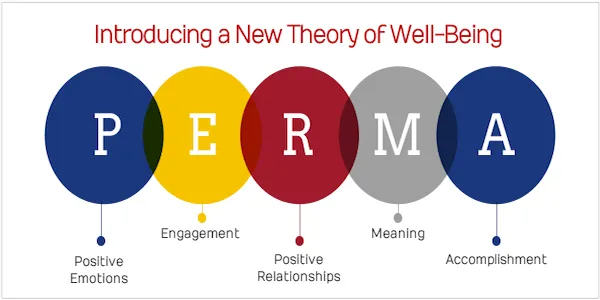Unpacking wellbeing
A short version of my Q2 2024 wellbeing research. There’s a longer version.
For years I struggled with the concept of wellbeing. What was it? Who and what was it good for? Could it help someone without any apparent mental or physical challenges? Could it be personal business as usual? Surprise: smart people had been working on this for years.

Diagram: PositivePsychology.com
How wellbeing fits into health
Most people have a good idea of what they mean by physical health, but the corresponding terminology for mental health is confusing, not helped by historic use by professionals.
My concept of comprehensive wellbeing is consistent with WHO and UK policy:
Health is a state of complete physical, mental and social wellbeing and not merely the absence of disease or infirmity. Source: World Health Organization (WHO) 1946.
| Physical health | Mental health | |
| Physical health | Wellbeing | Mental illness |
With this set up ‘mental wellbeing’ is identical to wellbeing. It is separate from (and does not imply the absence of) mental illness or distress (red). Green shows the potential for wellbeing to reduce mental illness and improve physical health.
This website focuses on two aspects of the green area of wellbeing: accomplishment and relationships. We’ll see more of that in the PERMA model below.
A way in: Positive Psychology
As noted above, I’ve struggled with the concept of wellbeing. Insurers’ emphasis on physical health made commercial sense for them, but left me wanting more. Any mental health benefits also focused on those with poor mental health or even mental illness.
I sensed that comprehensive wellbeing should go beyond conventional health. It should be more than supporting those with physical and mental health challenges, important though this is.
Others had, of course, got there decades before me. As the WHO noted:
Health is a state of complete physical, mental and social wellbeing and not merely the absence of disease or infirmity. Source: World Health Organization (WHO) 1946.
Positive Psychology concurs with this view for mental health. But Sigmund Freud’s psychotherapy was not designed to produce wellbeing, but to curtail misery. But positive psychology wants more:
Positive psychology is a scientific approach to studying human thoughts, feelings, and behavior, with a focus on strengths instead of weaknesses, building the good in life instead of repairing the bad, and taking the lives of average people up to “great” instead of focusing solely on moving those who are struggling up to “normal”.
Source: Prof Christopher Peterson – What Is Positive Psychology, What Is It Not?
Professor Martin Seligman is sometimes said to be the founding father of positive psychology. This article is a partial summary of is first attempt at a theory: the three element authentic happiness.
Authentic happiness (2002)
The Authentic Happiness book was written because:
The time has finally arrived for a science that seeks to understand positive emotion, build strength and virtue and provide guideposts for finding what Aristotle called “the good life”.
Source: Seligman Authentic Happiness preface
Authentic happiness and Positive Psychology were intended to be practical:
“So Positive Psychology takes seriously the bright hope that if you find yourself stuck in the parking lot of life, with few and only ephemeral pleasures, with minimal gratifications, and without meaning there is a way out. Source: Seligman Authentic Happiness preface
But, as explained in my longer article, Seligman found that three elements were insufficient to capture the source of individuals’ wellbeing. That took him to his next model.
Wellbeing theory: PERMA
Sounds promising doesn’t it? But there was more. Flourish (2011) introduced a five-component model of wellbeing. New items versus Authentic happiness are what this site is about:
| Component | Expansion |
| Positive emotion | Feelings and emotions, such as satisfaction, awe, joy, and contentment. |
| Engagement | Flow (1989). Being consumed in an activity and environment. |
| Relationships | Social connections inside and outside our immediate group. |
| Meaning | Having a sense of purpose in life. |
| Accomplishments | The experience of achievement and progression toward goals. |
For more detail see An Introduction to the PERMA Model or watch Seligman on PERMA.
So PERMA introduced two new elements: accomplishment and relationships. The first was motivated not just by Seligman’s student, but by the Motivation Reconsidered (1959) article.
Accomplishment. People seek success and mastery for its own sake. For example, some seem to aim simply to accumulate wealth, while others use the second half of life to distribute much of theirs: think Carnegie, Rockefeller, Wellcome, Gates and Buffett.
This website is about smaller and more personal accomplishment.
This website and PERMA
This website has a limited interaction with PERMA:
| Component | This website |
| Positive emotion | No coverage. |
| Engagement | Techniques expected to increase flow. |
| Relationships | Just a little on turbo-charging and an invitation. |
| Meaning | We could have fun here. But it’s out of scope. |
| Accomplishments | My personal and initially minimalist sharing. |